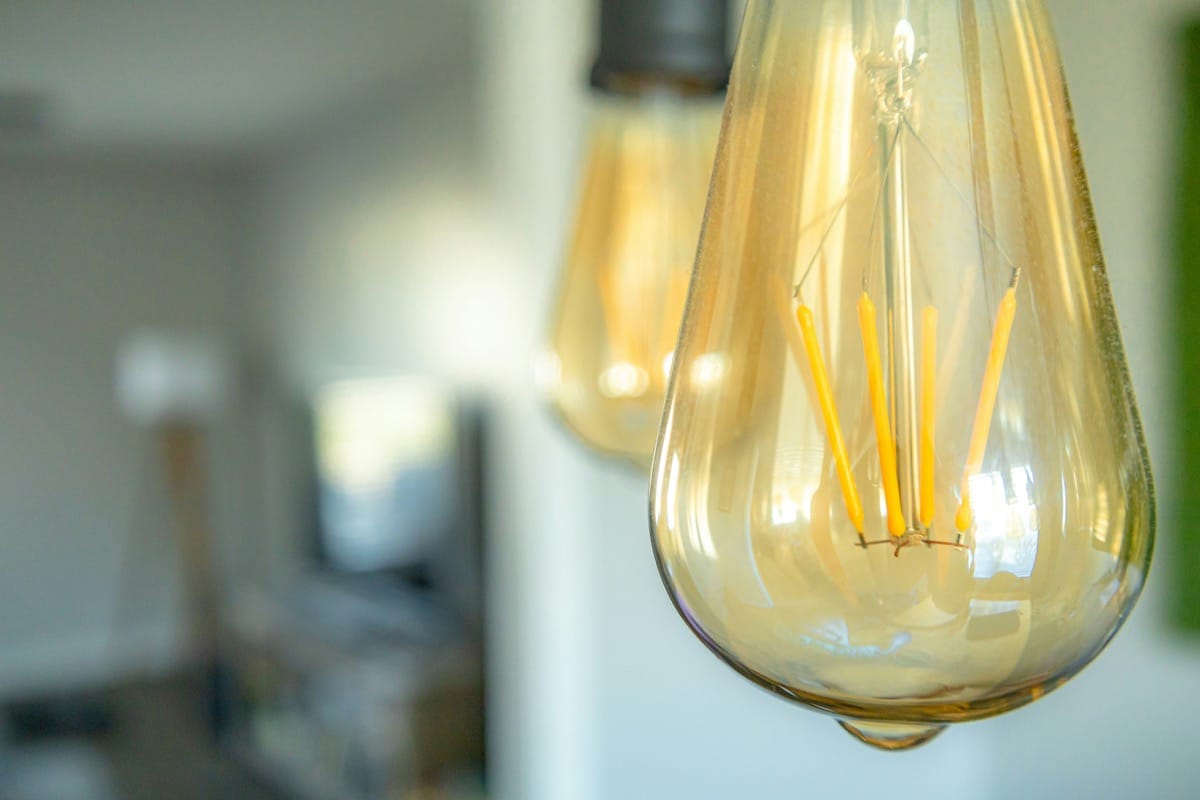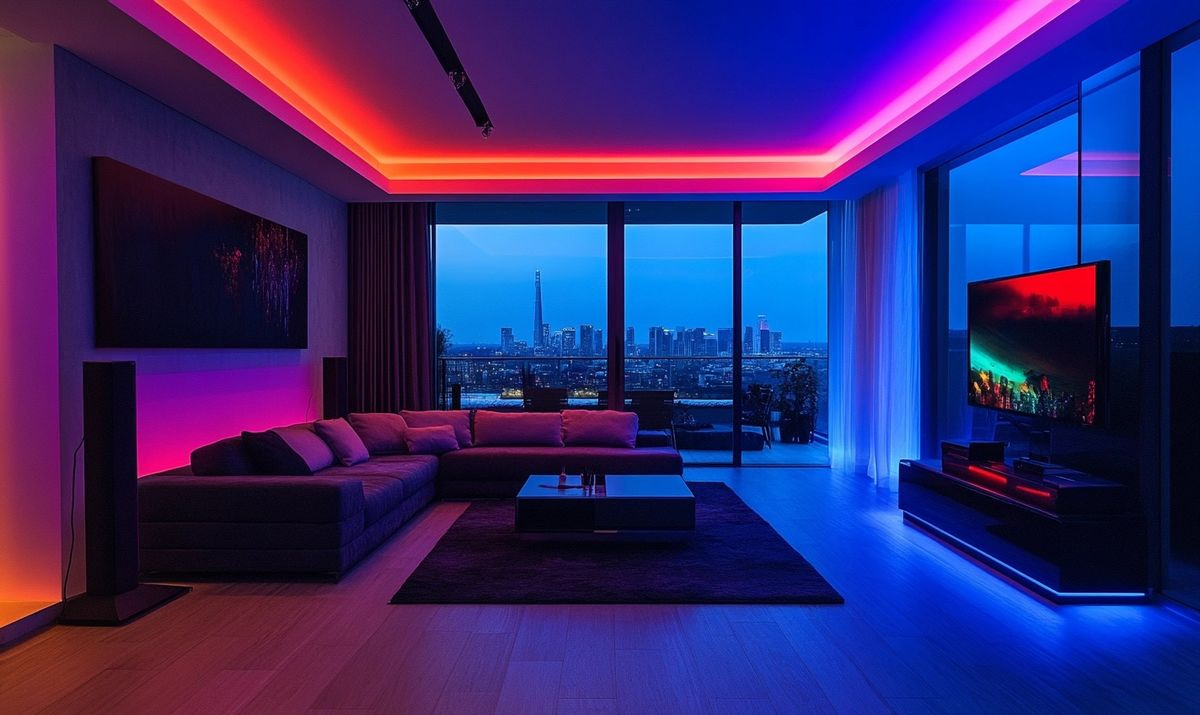Are you experiencing the frustrating phenomenon of flickering LED bulbs in your home or office? As an expert in lighting technology, I understand the annoyance that flickering LED bulbs can bring. Fear not, for this blog post will delve into the various causes of LED bulbs flickering, shedding light on this common issue. LED bulbs are known for their energy efficiency and longevity, but when they flicker, it can be a headache to troubleshoot. By understanding the underlying reasons behind this flickering, you can effectively address and resolve the problem, ensuring a steady and reliable light source in your space. Let’s explore the possible culprits behind flickering LED bulbs and discover how to rectify them for a consistently well-lit environment.
Common Reasons for LED Bulbs Flickering
So, you decided to upgrade your home lighting to energy-efficient LED bulbs, but now you notice that they are flickering. What could be causing this annoyance? Let’s dive into the common reasons for LED bulbs flickering.
Incompatible Dimmer Switches
Imagine trying to conduct an orchestra with a broken baton – that’s what it’s like when LED bulbs are paired with incompatible dimmer switches. Like mismatched partners in a dance, they just can’t sync properly, leading to flickering.
Voltage Fluctuations
Just as a roller coaster ride with unpredictable ups and downs can leave you feeling queasy, LED bulbs experiencing voltage fluctuations can flicker. Fluctuating voltage levels can disrupt the steady flow of electricity needed for the bulbs to shine steadily.
Poor Quality LED Bulbs
Quality matters. Buying bargain-bin LED bulbs might seem like a deal, but these subpar products can result in flickering issues. Much like a flimsy umbrella in a storm, poor-quality bulbs can’t withstand the electrical storm.
Overloaded Circuit Issues
Picture a dining table filled with too many dishes – it’s the same concept with overloaded circuits and LED bulbs. When a circuit is overburdened with too many devices drawing power, your bulbs might flicker due to insufficient electricity.
In summary, when it comes to LED bulbs flickering, it’s essential to consider factors such as the type of dimmer switch used, voltage stability, bulb quality, and circuit capacity. By addressing these common issues, you can enjoy a steady and reliable lighting experience in your home.
Incompatible Dimmer Switches
Are your LED bulbs flickering like a strobe light at a rave party? Well, before you grab your disco ball, let’s talk about one sneaky culprit that might be causing this annoying light show – incompatible dimmer switches!
What’s the Deal with Incompatible Dimmer Switches?
If your LED bulbs are flickering, it could be because they are not jiving well with your dimmer switch. Dimmer switches are like the conductors of the lighting orchestra, controlling the flow of electricity to your bulbs. But if they’re not compatible, it’s like trying to play a symphony with a jazz band – chaos!
- LED bulbs require specialized dimmer switches designed for their low wattage.
- Regular dimmer switches are designed for incandescent bulbs and can cause flickering in LEDs.
- Get dimmer switches specifically labeled as compatible with LED bulbs to avoid flickering issues.
How to Solve the Dimmer Dilemma
So, what’s the fix for this dimmer dilemma? It’s simple: swap out that old dimmer switch for one that’s compatible with LED bulbs. Just like swapping out a broken record for your favorite tune, switching to a compatible dimmer switch can bring back the harmony to your lighting.
Voltage Fluctuations
When discussing the _causes led bulbs to flicker, one crucial factor that often gets overlooked is voltage fluctuations. Think of voltage fluctuations as the rollercoaster ride of the electrical world. Just as a rollercoaster goes up and down, so does the voltage in your home’s electrical system. And just like how you feel queasy after a wild ride, your LED bulbs can flicker and dim due to erratic voltage changes.
How Do Voltage Fluctuations Impact LED Bulbs?
Voltage fluctuations can wreak havoc on LED bulbs, leading to erratic behavior like flickering. It’s like trying to have a stable conversation in a noisy room filled with distractions – the LED bulbs get confused and flicker as a result of the inconsistent power supply.
Common Signs of Voltage Fluctuations:
- Sporadic flickering of LED bulbs
- Changes in brightness without user input
- Brief power outages or surges
Preventing Voltage Fluctuations:
- Invest in a voltage stabilizer to regulate power supply
- Ensure proper wiring and grounding in your home
- Get an electrician to inspect and fix any issues with the electrical system
By addressing and mitigating voltage fluctuations in your home, you can provide a stable environment for your LED bulbs to shine brightly without any flickering interruptions. Remember, a smooth electrical journey leads to a flicker-free lighting experience!
Poor Quality LED Bulbs
When it comes to the flickering of your LED bulbs, one culprit that often gets overlooked is the **quality of the bulbs** themselves. Investing in high-quality LED bulbs can make a significant difference in the performance and longevity of your lighting system. Let’s delve into why poor quality LED bulbs can lead to flickering issues.
Manufacturing Defects
**LED bulbs of inferior quality** may be prone to manufacturing defects. These defects can manifest as inconsistent illumination, flickering, or even premature failure. Cheap materials and poor craftsmanship could result in a subpar product that struggles to maintain a steady light output.
Inadequate Components
Substandard LED bulbs often contain **cheap components** that are not designed to withstand the demands of continuous use. These components can easily degrade over time, leading to flickering as the bulb struggles to maintain a consistent flow of power.
Compatibility Issues
Low-quality LED bulbs may also **lack compatibility** with your existing fixtures or electrical systems. This mismatch can result in erratic behavior, including flickering, as the bulb tries to function within an environment it was not designed for.
Investing in high-quality LED bulbs may require a slightly higher upfront cost, but it can save you from the frustration and inconvenience of dealing with flickering lights down the road. Remember, quality is key when it comes to the performance of your lighting setup.
Overloaded Circuit Issues
Picture this: you’re enjoying a cozy evening with your LED bulbs softly lighting up the room when suddenly, they start flickering. What could be causing this annoyance? Let’s delve into the realm of overloaded circuit issues.
Voltage Overload:
An overloaded circuit can occur when there’s too much voltage running through your electrical system, causing your LED bulbs to flicker sporadically. It’s like trying to cram too many passengers onto a bus – eventually, it can’t handle the load.
Excessive Power Demand:
When you plug in too many appliances or devices into the same circuit, the power demand can exceed what the circuit was designed for. It’s akin to trying to charge multiple devices from a single outlet – it’s bound to cause a meltdown.
Poor Wiring:
If the wiring in your home is faulty or outdated, it can lead to an overload on the circuit. Think of it as trying to drive a high-performance sports car on a dirt road – it’s just not equipped to handle the speed.
But fear not, there are ways to address these overloaded circuit issues to banish those pesky LED bulb flickers:
– **Upgrade Circuit Capacity**: Consider upgrading your electrical system to accommodate the power needs of modern LED bulbs. It’s like giving that overloaded bus a bigger engine to handle all the passengers.
– **Distribute Power Wisely**: Spread out your appliances and devices across different circuits to avoid overloading a single one. Picture it as assigning seats on a bus to ensure a smooth journey for all passengers.
– **Professional Inspection**: Have a licensed electrician inspect your wiring to identify and fix any issues causing the overload. It’s like having a skilled mechanic fine-tune your sports car for optimal performance.
– **Invest in Quality LED Bulbs**: Opt for high-quality LED bulbs that are less prone to flickering and are better equipped to handle voltage fluctuations. Just like choosing a reliable car for a smooth ride.
By addressing overloaded circuit issues promptly, you can bid farewell to those pesky LED bulb flickers and create a stable, well-lit environment in your home. Remember, a well-balanced electrical system is key to keeping those lights shining bright.
Conclusion
In conclusion, understanding the causes of LED bulbs flickering is essential for ensuring a consistent and reliable lighting experience. By identifying and addressing issues such as incompatible dimmer switches, power supply fluctuations, and poor connections, you can effectively eliminate flickering in your LED lighting setup.
Remember, investing in high-quality LED bulbs and ensuring they are properly installed can go a long way in preventing flickering issues. And if problems persist, don’t hesitate to seek the help of a professional electrician to diagnose and resolve any underlying electrical issues.
With the right knowledge and proactive measures, you can enjoy the many benefits of LED lighting without the frustration of flickering lights. Here’s to a bright, stable, and flicker-free lighting experience in your home or workspace!
Frequently Asked Questions (FAQs)
What causes LED bulbs to flicker?
LED bulbs can flicker due to incompatible dimmer switches, poor electrical connections, or voltage fluctuations.
Can a dimmer switch cause LED bulbs to flicker?
Yes, using a dimmer switch not specifically designed for LED bulbs can lead to flickering issues.
How do poor electrical connections contribute to LED bulb flickering?
Loose or faulty electrical connections can cause intermittent power supply to the LED bulb, resulting in flickering.
Are voltage fluctuations a common cause of LED bulb flickering?
Yes, sudden changes in voltage levels can cause LED bulbs to flicker or even burn out prematurely.
Can using incompatible LED dimmer switches lead to flickering?
Absolutely, mismatched dimmer switches may not regulate the current properly, causing flickering problems with LED bulbs.







